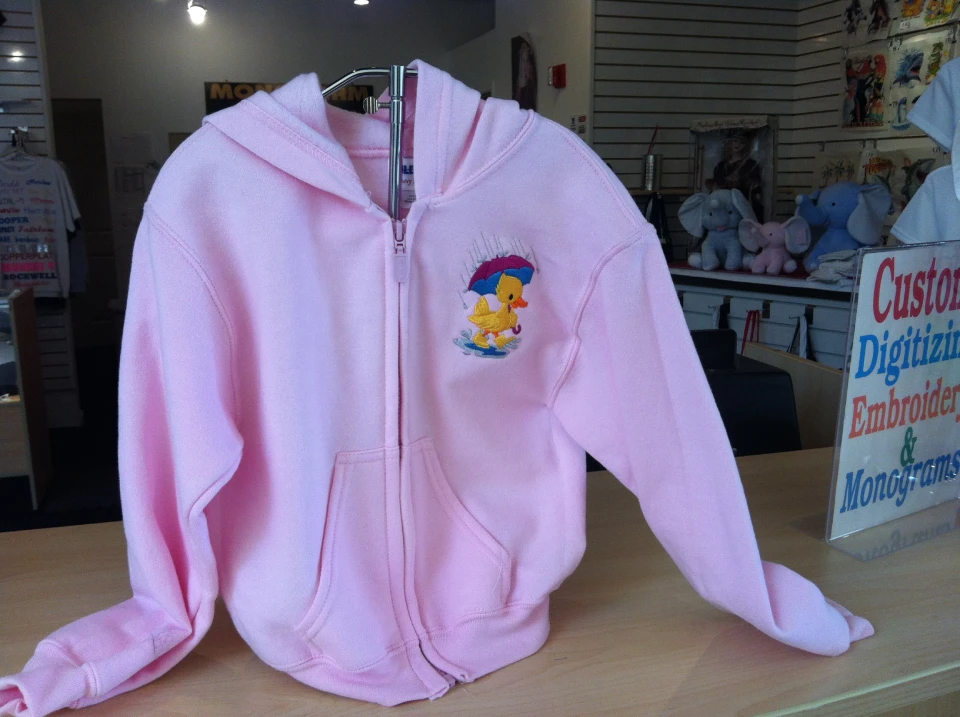The Art of Customized Embroidery: Opening the Keys to Creating Distinct and Memorable Designs
The tricks to developing custom embroidery designs that mesmerize the eye and leave an enduring perception lie in a fragile equilibrium of technique, creativity, and focus to information. As we dig right into the globe of personalized needlework, we discover the nuanced interaction between string selection, stitch complexity, and style customization that boosts a simple garment to a work of art.
Selecting the Right Embroidery Threads
When selecting embroidery threads, what crucial elements should you take into consideration to make sure the finest outcomes for your custom-made styles? The selection of needlework string is essential in determining the final result of your stitched design. Among the primary factors to consider is the material of the string. Different products such as cotton, polyester, rayon, and silk provide varying levels of sheen, resilience, and structure. It is necessary to pick a thread product that matches the textile you are embroidering on and aligns with the wanted appearance of the style.
Furthermore, the weight or density of the thread plays a significant duty in the look of the embroidery. Thicker threads can add dimension and texture to your layout, while finer threads are suitable for detailed information and small message. In addition, thinking about the color fastness and washability of the thread is crucial to ensure that your custom-made designs preserve their high quality and vibrancy gradually. By carefully reviewing these variables and selecting premium threads that satisfy your specific demands, you can boost the aesthetic allure and long life of your stitched creations.
Discovering Various Stitch Techniques
To look into the world of 'Discovering Different Stitch Strategies', one must understand the complexities and nuances that each sewing method brings to the art of embroidery. Different stitch methods not just include visual interest however additionally add to the overall appearance and measurement of the style. One prominent stitch technique is the satin stitch, which involves very closely packed parallel stitches to develop a smooth and glossy surface, ideal for loading in shapes and producing strong details.
On the various other hand, the backstitch is a flexible strategy commonly used for outlining and adding great details. It includes sewing backwards to create a solid line of embroidery. In addition, the French knot stitch adds a tactile aspect to styles, perfect for producing distinctive accents like flower centers or ornamental touches.
Discovering various stitch strategies permits embroiderers to play with light, darkness, and deepness within their designs, boosting the aesthetic allure and imaginative quality of their embroidery projects. By understanding various sewing techniques, one can unlock limitless opportunities for developing special and unforgettable personalized needlework pieces.
Incorporating Personalized Style Elements
Having checked out the ins and outs of various stitch techniques such as the satin stitch, backstitch, and French knot, the emphasis now moves towards including individualized style components in custom-made embroidery projects. Customized layout components play a critical role in making embroidery jobs absolutely one-of-a-kind and remarkable.
One more way to include customized style elements is by consisting of signs or concepts click over here that hold unique meaning to the recipient or mirror their rate of interests and personality. For example, integrating a favored flower, animal, or hobby-related icon can make the embroidery style extra meaningful and personalized. In addition, selecting shades that resonate with the recipient or straighten with the desired motif can even more improve the customization of the needlework task.
Grasping the Art of Shade Sychronisation
One secret facet of shade control is recognizing shade theory. This consists of understanding how different shades interact with each various other, the emotions they share, and how they can be combined to develop aesthetically attractive layouts. By applying color theory concepts, embroiderers can create unified color schemes that boost the general appearance of the layout.
In addition, focusing on comparison is vital in shade control. Using contrasting colors can aid particular elements of the design pop, boost legibility, and develop a visually dynamic needlework piece. By grasping the art of color sychronisation, embroiderers can boost their layouts and create unforgettable pieces that resonate with clients and visitors alike.
Enhancing Structure With Advanced Needlework Stitches

French knots, for instance, are excellent for adding little, elevated dots to your layout, resembling the look i was reading this of grains or producing a textured surface. Bullion knots, on the other hand, can be utilized to produce twisted, ropelike components that include a luxurious feeling to the embroidery. Seed stitching entails little, scattered stitches that can fill in locations with a speckled texture, while turkey work produces cosy, dimensional accents evocative animal hair or vegetation. Explore these sophisticated embroidery stitches allows you to press the borders of typical needlework and produce really distinct and visually enticing textures in your layouts.
Verdict
Finally, the art of customized needlework entails a combination of selecting the appropriate threads, discovering various stitch strategies, including personalized design aspects, mastering color coordination, and improving texture with sophisticated stitches. By understanding and carrying out these crucial elements, embroiderers can produce one-of-a-kind and remarkable designs that showcase their imagination and ability. Needlework enthusiasts can open the secrets to creating attractive and custom items that stand out and leave an enduring perception.